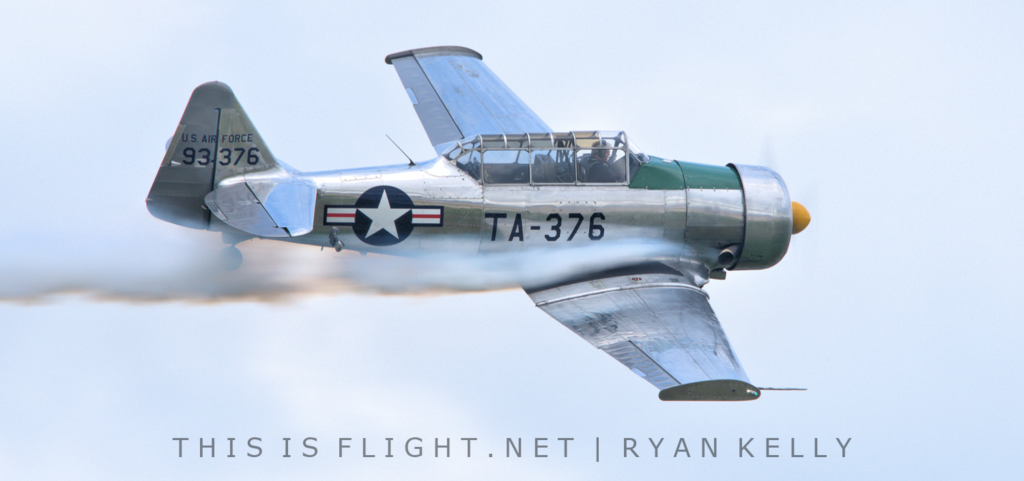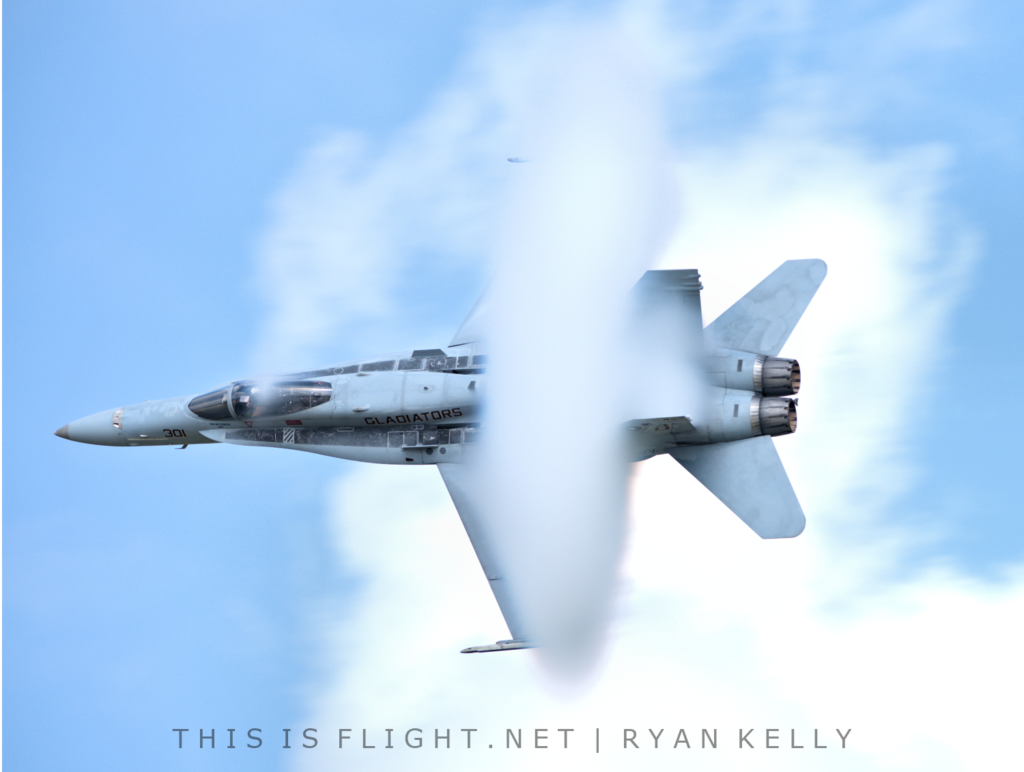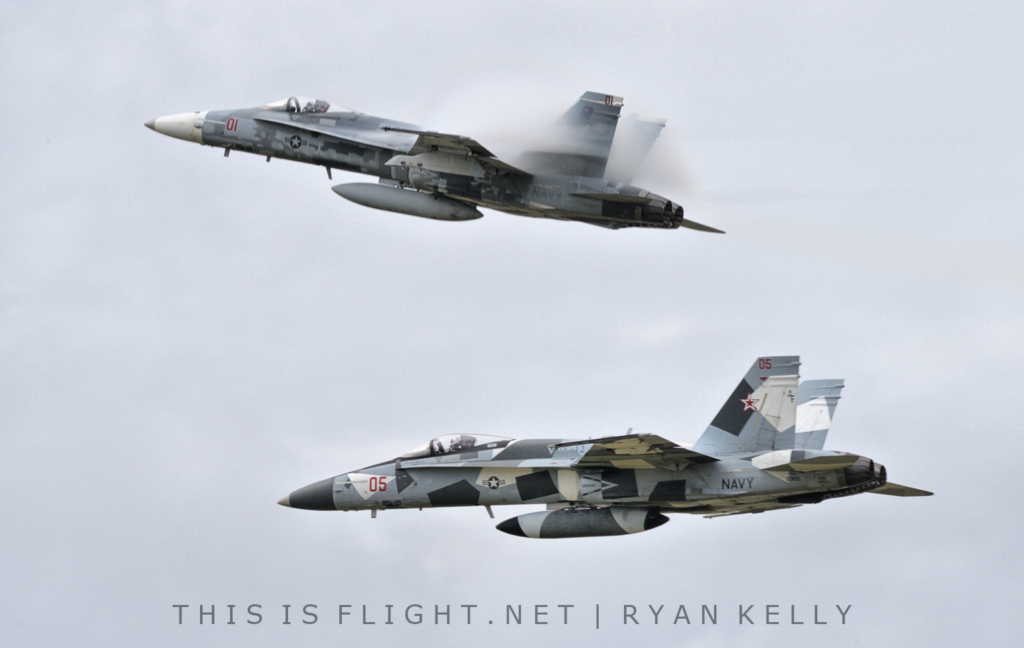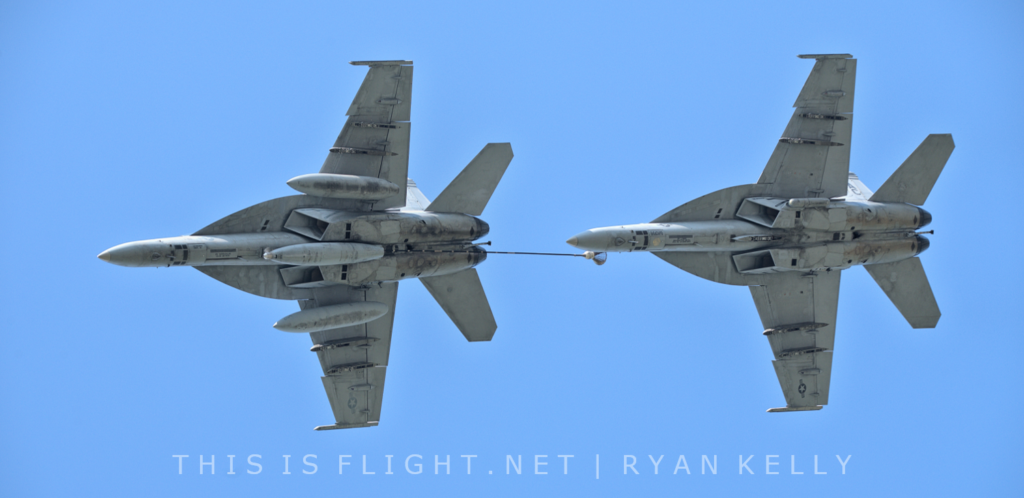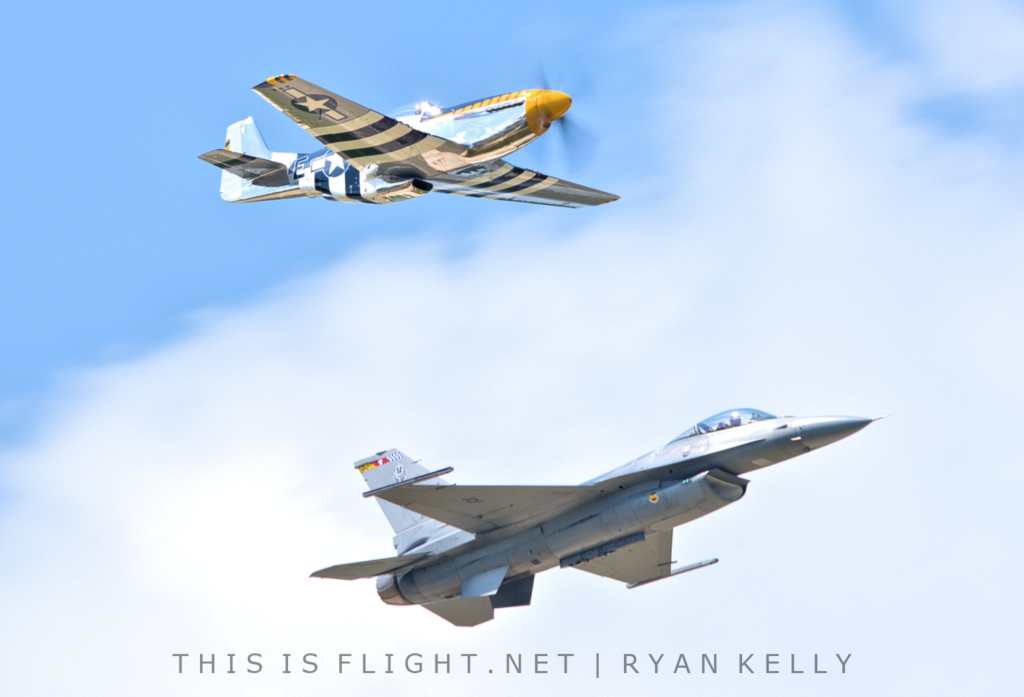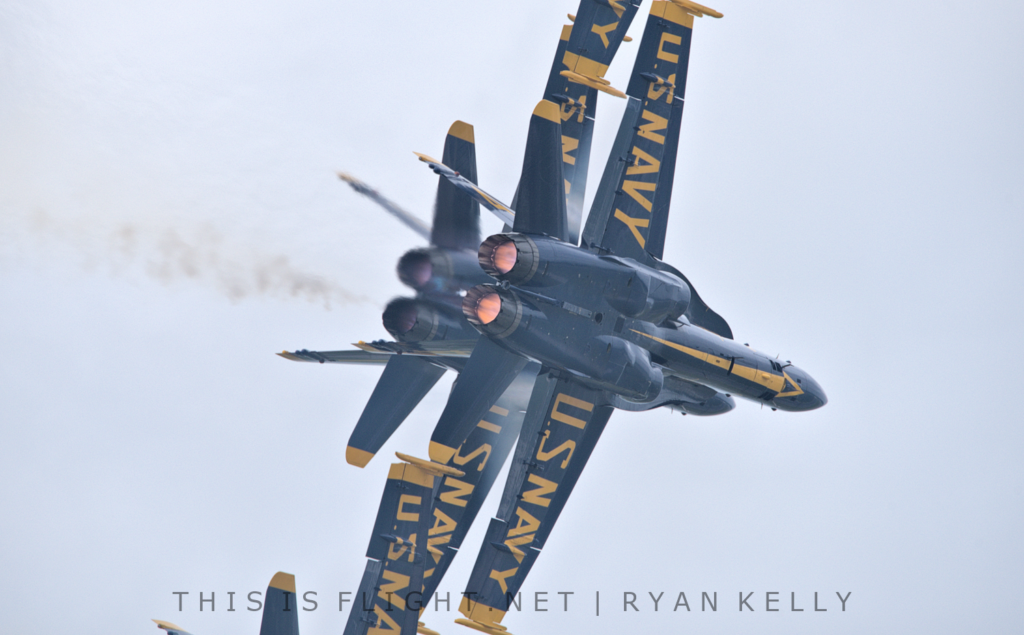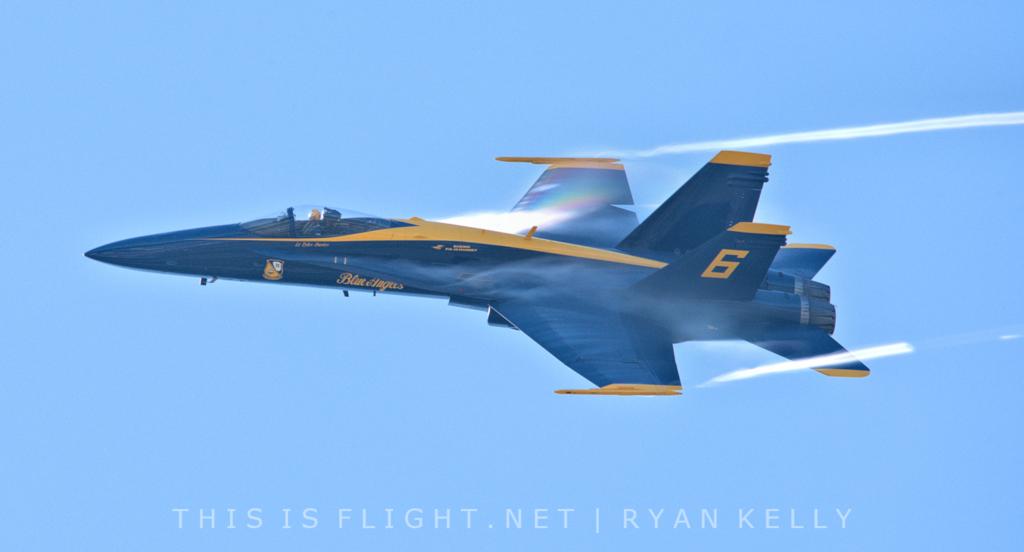Virginia Beach, Virginia is home to Master Jet Base, Oceana Naval Air Station, known around the world for hosting a spectacular annual airshow. NAS Oceana was once home to Phantoms and Tomcats, but now it is a Hornet nest. The base is home to nearly twenty squadrons of Hornets and Super Hornets, both of which always feature heavily in the flying program. The show presents a healthy mix of civilian and military displays and is traditionally capped off by the US Navy Blue Angels.
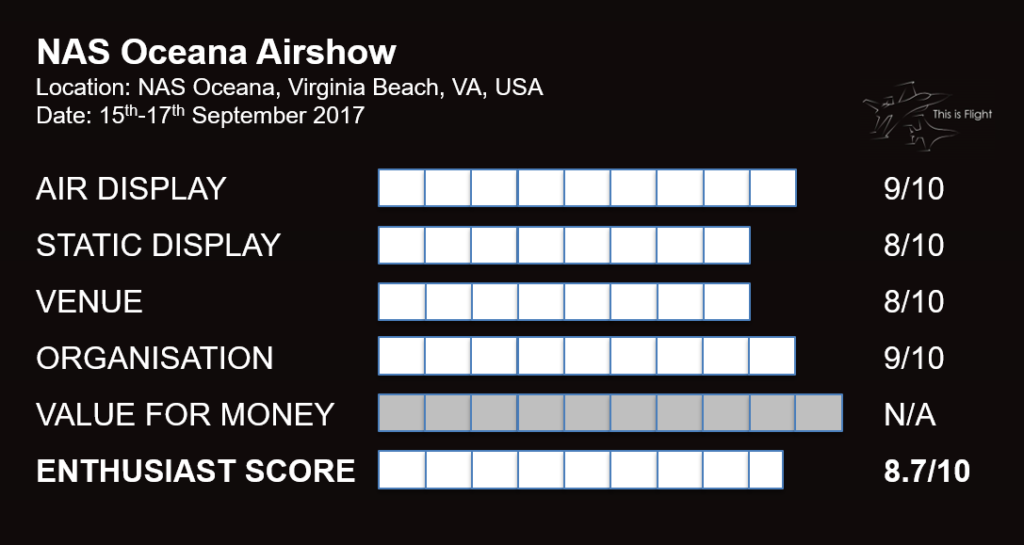
I arrived on base early Friday morning to the familiar feeling of warm and humid air, ensuring some spectacular photographs with vapor over the aircraft. There was a wide variety of aircraft in the static display; everything from a Cessna 182 up to a B-52H Stratofortress provided by the US Air Force. While several cargo aircraft had been scheduled to appear in the static display, these aircraft were assigned relief duty following the devastating hurricanes to hit Texas and Florida recently, and would not therefore be able to make the show.
This year’s show opened with the familiar sound of Bill Leff in his T-6 Texan. A beautifully polished aircraft that was manufactured in 1943, Bill’s routine showcases the grace of the T-6 as he flies it through a series of loops, rolls and photo passes to give the crowd an up close look at the vintage warbird. A first to Oceana, Eugene Nock brought his “Batcopter” and “Batmobile” to the show. The helicopter, a Bell 47, was the actual Batcopter from the original Batman TV show featuring Adam West as Batman. Eugene made several passes in front of the crowd, and the Batmobile drove in front of the crowd with the afterburner effect so famous to every Batmobile.
After hearing the vintage sounds of radial and rotor, the skies filled with the familiar sounds from the F/A-18 Hornet. Based at Oceana, VFA-106 “Gladiators” provide the Tactical Demonstration Teams showcasing the capabilities of both the Legacy Hornet and Super Hornet. This particular demo would showcase the older Legacy Hornet. From 100 miles per hour to nearly 700, maneuvering capabilities, and beautiful photo passes, Tac Demo team flies the hell out of this older – but still highly capable – aircraft.
These first performances felt almost like teasers, as they were followed by the national anthem and a parachute jump, deviating from the more usual format at US airshows which usually sees the national anthem open the event. Scheduled after this was the famous “Airpower Demo”. This pyrotechnic-filled display includes several Oceana-based Hornets and Super Hornets to give the public an up close look at what a dogfight looks like. To close the demonstration was a fleet flyby: a four-ship pass in a diamond formation followed by a break to land.
Jerry Conley brought his de Havilland Vampire to the show, a first generation jet aircraft with RAF markings and camouflage. Having seen his jet a couple of times this year, I am still blown away by this very early classic jet, both by how quiet it is and by its extraordinary grace as Conley puts it through its paces. Following this, it was back to the Hornets; this year’s show featured a changing of command for VFC-12, “Fighting Omars”. The change of command took place in the air in front of the crowd as aircraft from the squadron performed a flypast; an awesome sight to see and a first for this reporter.
The Viper Demo Team from the Air Force was present to show off the mighty F-16 Fighting Falcon and show the Navy town what the Air Force can do with their fighter aircraft. After the impressive demonstration, Jim Beasley in his P-51D Mustang “Bald Eagle” joined up with the F-16 for the familiar Heritage Flight routine of three formation passes and a break. “Mr Air Show”, Gene Soucy, then took to the skies next for his aerobatic display. I was amazed at how little of the airshow box he used during his routine. The hometown boys from VFA-106 then brought their F/A-18 Super Hornet out next. Once again, the team pushed the Boeing aircraft to the limits, fully showcasing the flight envelope of the aircraft. Their final photo pass was topped off by a wall of fire from the pyrotechnics team!
The Blue Angels were the final act of the show with their six F/A-18 Hornets. The routine initially sees a four-ship formation known as the Diamond and the two solo aircraft performing individually, before joining up later in the display. The Diamond four-ship showcases the beauty of close formation flying with as little as 36 inches wingtip to canopy during the tightest formations, while the solos showcase the agility and power the F/A-18 Hornet has to offer. The team performed a flawless show across the weekend and gave the crowd a vivid demonstration of what power, technology, communication, and more importantly, teamwork looks like. Varying weather conditions and cloud ceilings also meant that those who attended on multiple days of the show were able to enjoy both their low and high show. The team ends their display with all six aircraft in the diamond formation performing a head-on break, and then an eventual carrier break for landing. It is quite possibly the fastest thirty minutes of flying you will witness.
In addition to the main show at NAS Oceana, Saturday evening included a special twilight show at the beach just down the road from the base. This included a concert, a parachute jump onto the beach and a brief appearance from the Super Hornet Tac Demo team performing several afterburner passes along the coast. Just as fast as a high speed pass, the weekend ended and time to head home. I have been to the air show at Oceana multiple times, and it is a favorite event for me; Oceana always promises lots of jet noise and this year’s annual trip to the Hornet’s nest did not disappoint!
Ryan Kelly has been around aviation for over twenty years and photography for five. He is a licensed pilot that enjoys sharing his passion for aviation and photography with others. Ryan currently resides in Eastern Pennsylvania and enjoys sports, music, and cooking.
